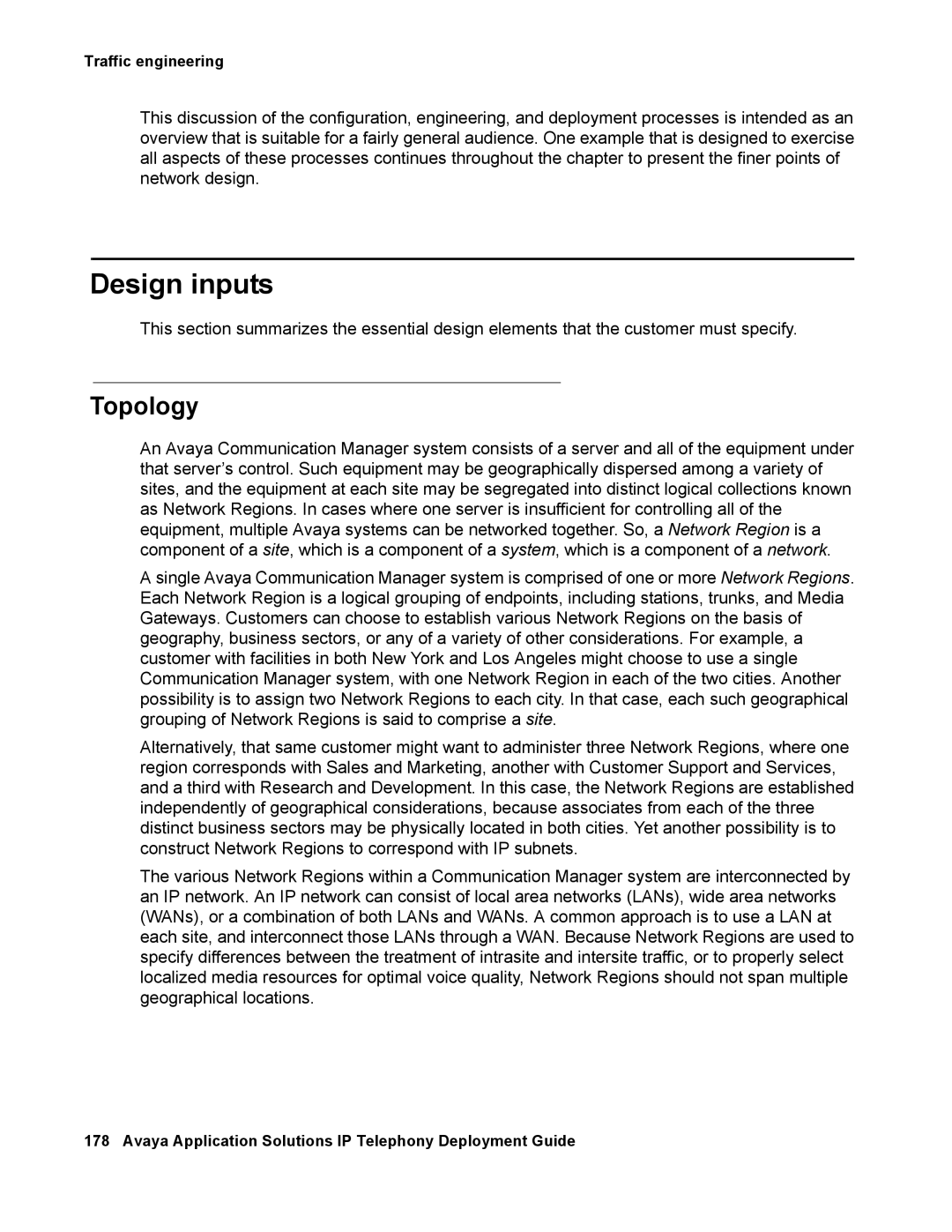
Traffic engineering
This discussion of the configuration, engineering, and deployment processes is intended as an overview that is suitable for a fairly general audience. One example that is designed to exercise all aspects of these processes continues throughout the chapter to present the finer points of network design.
Design inputs
This section summarizes the essential design elements that the customer must specify.
Topology
An Avaya Communication Manager system consists of a server and all of the equipment under that server’s control. Such equipment may be geographically dispersed among a variety of sites, and the equipment at each site may be segregated into distinct logical collections known as Network Regions. In cases where one server is insufficient for controlling all of the equipment, multiple Avaya systems can be networked together. So, a Network Region is a component of a site, which is a component of a system, which is a component of a network.
A single Avaya Communication Manager system is comprised of one or more Network Regions. Each Network Region is a logical grouping of endpoints, including stations, trunks, and Media Gateways. Customers can choose to establish various Network Regions on the basis of geography, business sectors, or any of a variety of other considerations. For example, a customer with facilities in both New York and Los Angeles might choose to use a single Communication Manager system, with one Network Region in each of the two cities. Another possibility is to assign two Network Regions to each city. In that case, each such geographical grouping of Network Regions is said to comprise a site.
Alternatively, that same customer might want to administer three Network Regions, where one region corresponds with Sales and Marketing, another with Customer Support and Services, and a third with Research and Development. In this case, the Network Regions are established independently of geographical considerations, because associates from each of the three distinct business sectors may be physically located in both cities. Yet another possibility is to construct Network Regions to correspond with IP subnets.
The various Network Regions within a Communication Manager system are interconnected by an IP network. An IP network can consist of local area networks (LANs), wide area networks (WANs), or a combination of both LANs and WANs. A common approach is to use a LAN at each site, and interconnect those LANs through a WAN. Because Network Regions are used to specify differences between the treatment of intrasite and intersite traffic, or to properly select localized media resources for optimal voice quality, Network Regions should not span multiple geographical locations.
